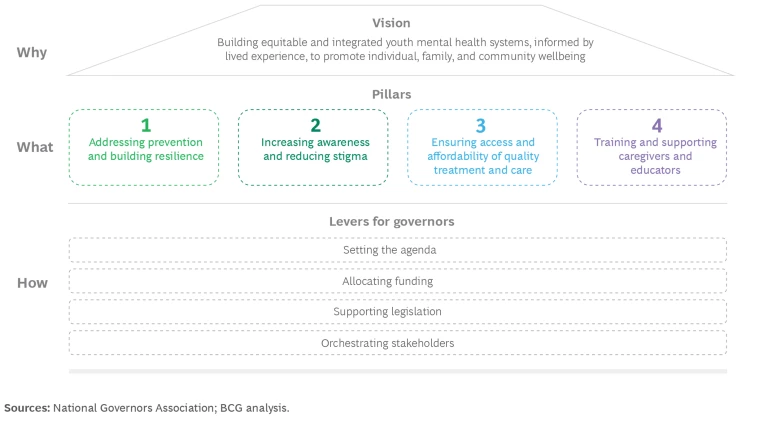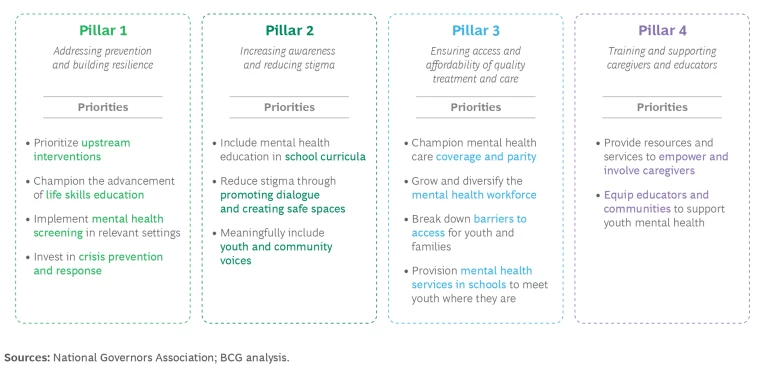Overall levels of depression, anxiety, self-harm, and suicide continue to rise among US youth. In 2021, more than 40% of students surveyed by the US Centers for Disease Control and Prevention reported feeling persistently sad or hopeless—and more than 20% said that they seriously considered suicide. The roots of this crisis existed before COVID-19, but the pandemic dramatically accelerated the decline in youth mental health.
Through its 2022–2023 chair’s initiative, Strengthening Youth Mental Health, the National Governors Association (NGA) has supported state leaders’ efforts to tackle this crisis. Led by Governor Phil Murphy of New Jersey, NGA chair, the initiative brought together young people, community leaders, state policymakers, and experts from more than 60 organizations to share their lived experience and best practices in the field of youth mental health. To culminate the initiative, the NGA, in collaboration with BCG, has published a new report titled Strengthening Youth Mental Health: A Governor’s Playbook.

Drawing on an analysis of mental health initiatives across US states and territories, the report focuses on four core pillars for state intervention (see the first exhibit):
- Addressing Prevention and Building Resilience. Supporting youth with the tools they need to address stressors and challenges, reducing the risk of mental health conditions, and proactively identifying and managing existing mental health conditions to prevent crises
- Increasing Awareness and Reducing Stigma. Promoting awareness of mental health resources and decreasing the stigma associated with youth mental health challenges
- Ensuring Access and Affordability of High-Quality Treatment and Care. Removing barriers such as high costs, lack of insurance coverage, and limited availability of mental health services to ensure that high-quality care is accessible to youth in appropriate places, spaces, and time frames
- Training and Supporting Caregivers and Educators. Expanding training and support so that those caring for and interacting with youth on a daily basis have the knowledge and tools necessary to identify mental health needs and access support
The report identifies 13 priority areas to help governors navigate the youth mental health landscape (see the second exhibit), and it highlights 36 policy opportunities and specific action items for governors and state leaders to consider when setting their agendas, allocating funding, supporting legislation, and orchestrating stakeholders. The report spotlights dozens of innovative, impactful solutions that are already delivering positive outcomes across the country.

Youth across the US face unprecedented mental health challenges and a severe shortage of services to address their needs. By adapting and implementing proven solutions in their states, governors have the opportunity to drive meaningful change—saving the lives of our most vulnerable youth and championing a holistic system dedicated to mental wellness.





